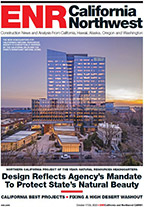While Gov. Arnold Schwarzenegger was emphasizing job creation in his final State of the State address this week, his appointed stimulus Inspector General Laura Chick was criticizing a two-month backlog for projects needing an okay from the Office of Historic Preservation.
The governor says he wants to foster a business-friendly economy and create jobs via his proposed California Jobs Initiative, which will create or retain up to 100,000 jobs and provide training to 140,000 people to enable them to keep their current positions or compete for higher paying jobs. In his speech, he says he also wants to propose a measure to streamline the permitting of construction projects that already have a completed environmental impact report.
The governor’s proposal would grant the state Business, Housing, and Transportation Agency the right to select a specified number of projects that have completed environmental impact reviews (EIRs) and deem those projects as approved and not subject to legal challenge – expediting the ground breaking of these projects and creating jobs. Statewide, Gov. Schwarzenegger says projects are ready to break ground, but become delayed due to unnecessary litigation surrounding EIRs.
“Too often, projects that have completed an EIR are delayed because of frivolous lawsuits challenging the validity of the EIR,” he says. “The new NFL stadium in Los Angeles County is an example of such a project. Despite years of environmental review – and despite a design that makes the stadium the “greenest” in the country – the project was held up by needless lawsuits brought by a tiny group of individuals. Legislative intervention was necessary to get the project approved and put 18,000 Californians to work.”
He says this proposal will not exempt projects from the California Environmental Quality Act (CEQA) and will expedite shovel-ready projects that have followed environmental law, not provide a way for projects to circumvent California’s strong environmental protection law.
Meanwhile, Inspector General Chick sent a letter to the governor this week and emphasized that when the American Recovery Act was passed last February, “both President Obama and you made it eminently clear that these precious dollars were to be spent faster and better than ever before.
“The Recovery Act is both a call and an opportunity for government to do things differently and smarter by finding ways to streamline, eliminate needless hurdles, slash bureaucratic red tape and implement efficiencies.”
Chick adds that there are numerous hoops to jump through, including permits, competitive bids, wage requirements, environmental regulations and historic preservation rules.
“By law, the State’s Office of Historic Preservation is required to sign-off before construction projects begin,” Chick says. “Due to the Recovery Act, there has been a marked increase in the number and type of projects and this has resulted in a two-month backlog that is growing exponentially as more projects advance forward.
“Many projects are for weatherization which may be extremely small in scope like installing a heating and air conditioning unit. The sheer quantity of these projects has been problematic for the Office of Historic Preservation.”
Because some state departments that are receiving Recovery funds have never had to deal with the National Protection of Historical Properties Law, Chick says these departments require additional attention with training and consultation. To deal with this backlog, she says the state can do a number of things, such as modifying furloughs for key personnel, finding ways to transfer staff from other departments (such as analysts who could perform some of the required preliminary work), streamline the hiring process, rehire on a short-term basis retired state employees and conduct an open-call for experienced volunteers. State departments should also be instructed to prioritize their ARRA project submissions to Historic Preservation, she adds.
“Every day that a project is stalled is a delay in creating desperately needed jobs for Californians,” says Chick.
“Department heads should scrutinize their ARRA projects to determine what, if any, other impediments are in the way of expeditious completion, find appropriate ways to move these projects forward and streamline clogged bureaucratic processes.”
State transportation and public works spending of the ARRA funds is going slowly, with only $119 million spent so far of the $3.4 billion awarded (3%).


Post a comment to this article
Report Abusive Comment